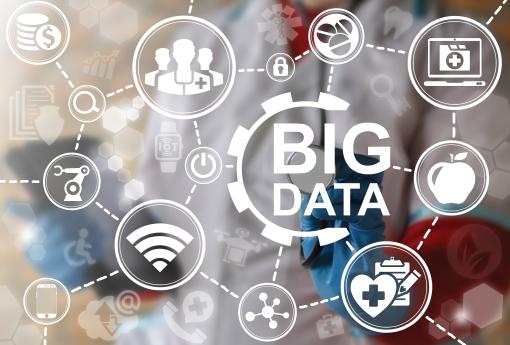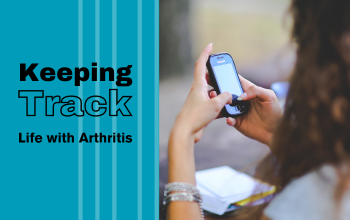The Arthritis Newsletter
Summer 2017Big Data: Accessing Existing health Databases to Advance Health Research
By Kelly English
 Have you ever wondered about the term “Big Data”? Does it sound like a risk to the security of your health data?
Have you ever wondered about the term “Big Data”? Does it sound like a risk to the security of your health data?
Not at all! I sat down with Natalie McCormick, a PhD Trainee at Arthritis Research Canada to discuss the use of Big Data in her research. Ms. McCormick took me through the research steps from start to finish to help us understand how the patient is protected.
- Identify a research question: Ms. McCormick is studying the Economic Burden of SARDs (Systemic Autoimmune Rheumatic Diseases) across a population. The research team writes a grant proposal with the questions they want answered and submit it for funding. If the grant is approved, Ms. McCormick can then start the process to access the data she needs from Population Data BC (PopData BC).
- Institutional and Government approvals: Before approaching the Ministry for the data the first step for Ms. McCormick is an application to her University Ethics Committee. This is a full board committee that ensures the study involves minimal risk, the questions are clear and the data she requires is clearly laid out. If the request is approved at the university the next step is to submit a Data Access Request (DAR) to PopData BC. The DAR states which databases she needs access to and the details must be exactly the same as the ethics request to the University. The DAR process is a four-stage process that includes the names of everyone who will have access to the data to undergo an online privacy training module.
- De-identifying: Once the DAR is approved, Ms. McCormick is able to receive only the data she requested. It is encrypted and has no names or identifiers connecting it to individual patients. Depending on the request the data may include the patient’s age, sex or what other diseases the person has had prior, i.e. diabetes or heart disease. The data is loaded onto a secure computer server in BC. Only certain designated members of the project team who have completed the privacy training can access the data and it cannot be accessed outside of Canada.
- Publication. The final step taken to protect your identification and information before Ms. McCormick can publish the findings occurs when the study results are put into a draft manuscript for publication. The draft then goes through another review by the Data Stewards who are the individuals responsible for the databases that were accessed. For example, a recent manuscript got reviewed by four people: one from the Ministry of Health, PharmaNet, the Vital Statistics Agency and the Cancer Agency. One thing they are looking for is identification that may result from a small group size. For example, if a researcher has a sample size of 5 people in BC with a rare disease and one is a 49-year-old female, this data would not be allowed to be published as the person has a higher risk of being identified. The job of the Data Stewards is to ensure the publication aligns with the objectives set out in the DAR while protecting the privacy of patients.
Big Data is collected through a variety of agencies in Canada while the data Ms. McCormick uses is specifically from BC. The data may come from hospital visit billing codes, PharmaNet codes (all prescriptions dispensed) billing codes from doctor visits or a number of other sources. The data cannot be traced back to individual patients but can illuminate how events occur throughout disease history. By using this data we can predict future disease activity across a population and assist with planning health care spending and delivery.
I hope this has helped to demystify how Big Data can be safely accessed to provide valuable information for ongoing health research. In a future article, I will follow up with Ms. McCormick’s project on SARD’s to demonstrate the specific use of Big Data to answer an important research question.
LEARN MORE: Arthritis Research Canada researcher Clayon Hamilton is doing a survey on how much people know about Big Data. Take the survey now to help researchers understand the patient’s feelings about the use of Big Data in health care research. Click here for a link to the survey.





















































